5th Metatarsal Fracture Exercises
James McCormack is a Knee, Foot and Ankle Specialist Physiotherapist with over 10 years experience.
Alongside his clinical work he has created this website to provide free-to-read content for it's users.
Latest posts by James McCormack (see all)
- Anterior Ankle Impingement - July 24, 2022
- Tarsal Coalition - October 12, 2022
- Sural Nerve Pain - October 3, 2022
There are several types of 5th Metatarsal Fractures, but most follow a similar Physical Therapy Rehabilitation Protocol. Patients typically spend 4-6 weeks in a Walking Boot if the fracture is treated conservatively before commencing Physical Therapy.
The period of immobilisation in the walking boot leads to mass muscle weakness, muscular tightness and a deterioration in balance. A thorough protocol should involve graded exposure to strengthening exercises, a slow transition from the walking boot and a slow reintroduction to impact exercises.
It is also essential to have a graduated transition from a walking boot to a normal shoe. This article provides the essential exercises to begin your rehabilitation from a 5th Metatarsal Fracture, but this is not medical advice, and you should speak to your Doctor before commencing them.
5th Metatarsal Fracture Exercises
Stretching Exercises
The calf complex consists of two main muscles; the Gastrocnemius and the Soleus Muscle. They become tight and shortened due to the time spent in the walking boot so it is important to stretch the consistently 3-4 times daily.
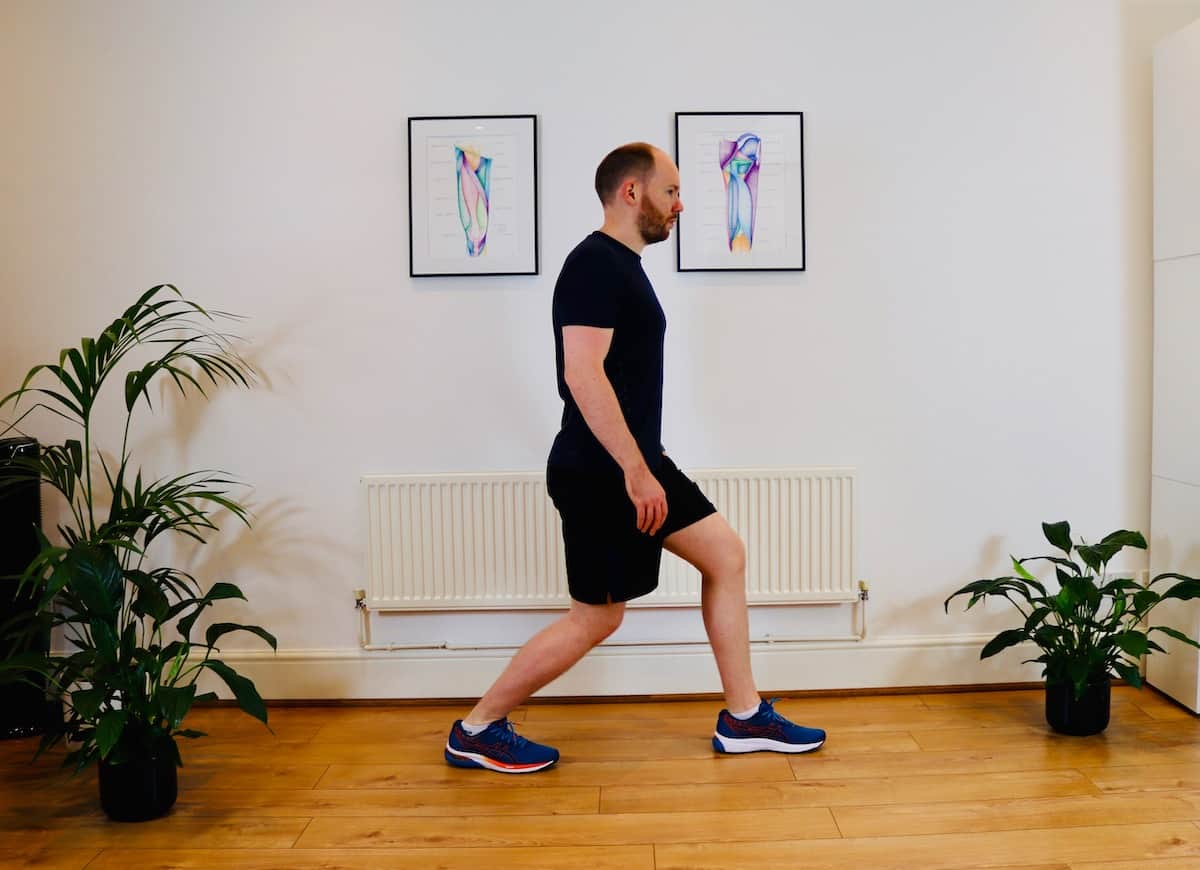
Soleus Muscle Stretch
- Stand upright with the affected leg behind you
- Bend the back leg while keeping your heel on the floor
- Stop and hold when you feel a pull on the back of your leg
- Hold for 45 seconds
- Repeat 3-4 times daily.
Gastrocnemius Muscle Stretch
- Stand upright with the affected leg behind you
- Keep the knee straight on the leg behind with a slight bend on the knee in front
- Move forward on the front leg while keeping both heels on the floor
- Stop moving forward once you feel a stretch on the back leg
- Hold for 45 seconds
- Repeat 3-4 times daily.
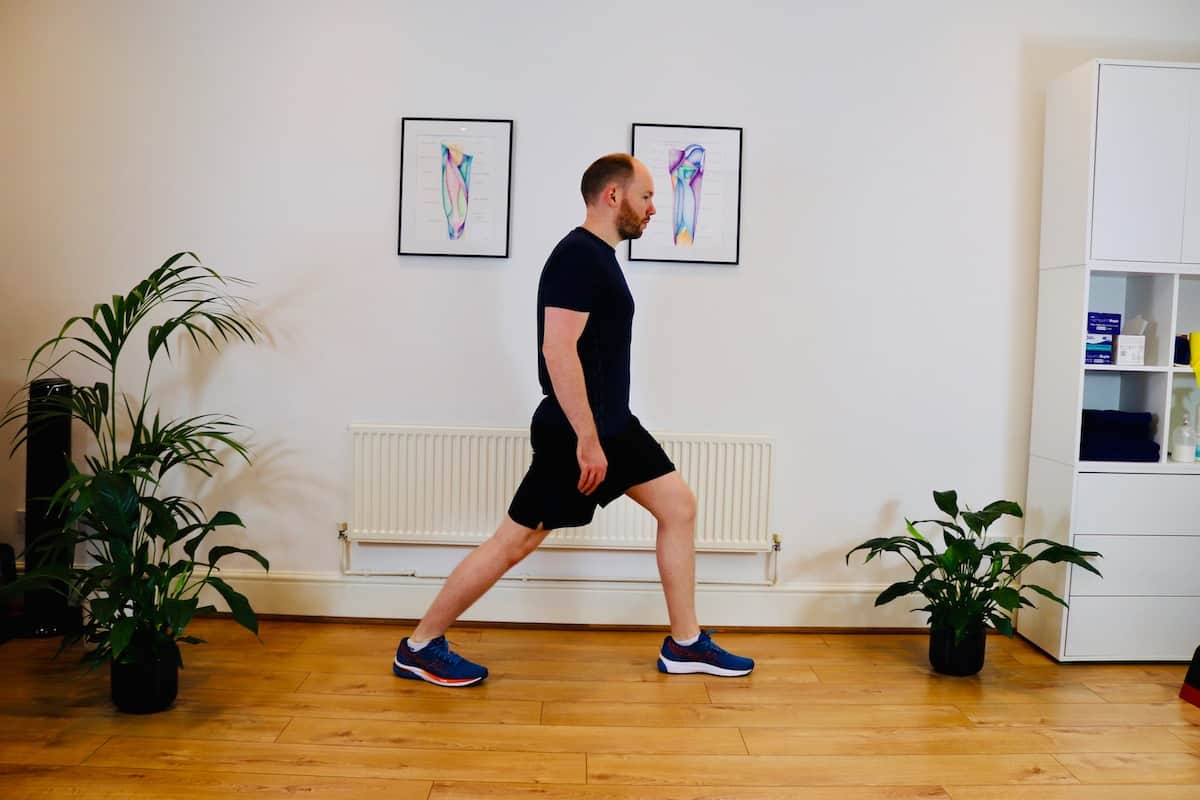
Muscle Strengthening Exercises
4-6 weeks in a walker boot can lead to mass muscle atrophy so it is important to increase the strength of the key stabilising and mobilising muscles of the foot and ankle.
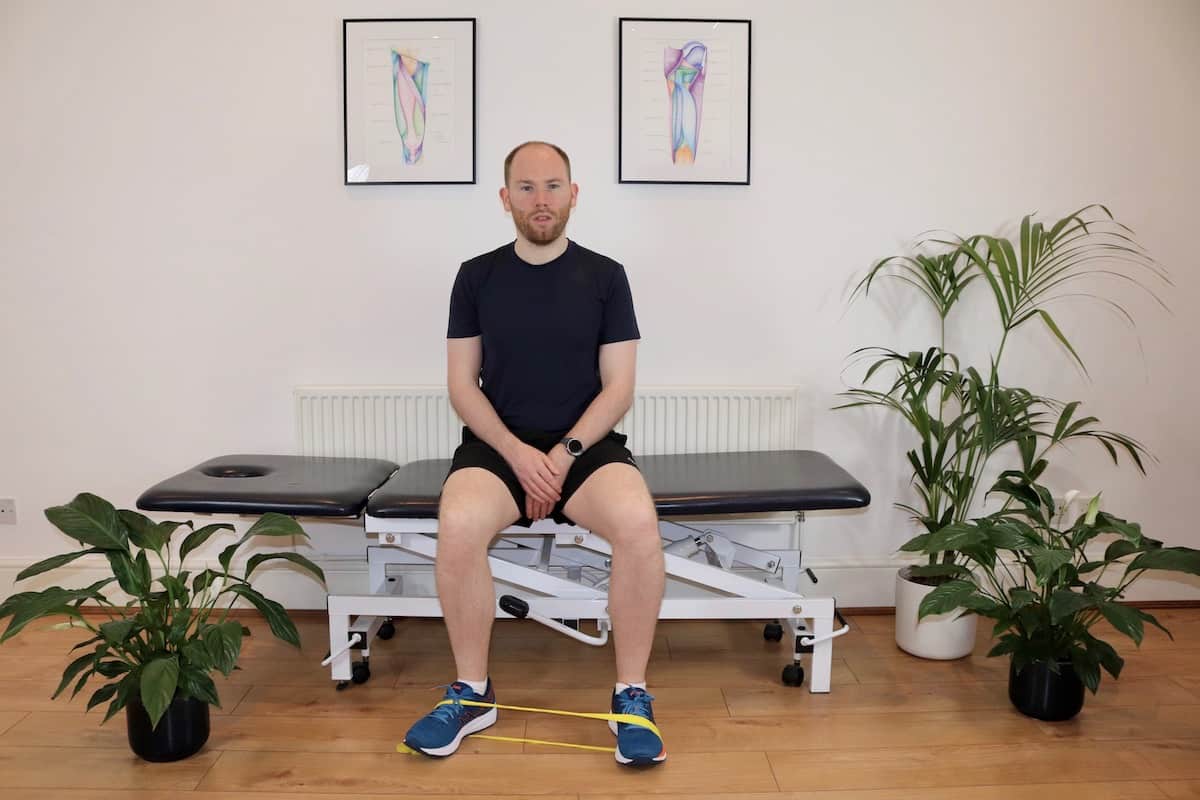
Peroneal Muscle Strengthening
- In a seated position, place both feet flat on the floor
- Place a band around both feet. Turn the affected foot outwards (eversion) against the resistance of the band
- Slowly return to your starting position to complete one repetition
- Band Colour: Yellow
- Repetitions: 15
- Sets: 3
- Frequency: Once daily
Posterior Tibialis Muscle Strengthening
- In a seated position place the affected ankle over the opposite knee
- Place a band around both feet
- Point the toes of the affected foot and lift them up against the resistance of the band
- Slowly return to your starting position to complete one repetition
- Band Colour: Yellow
- Repetitions: 15
- Sets: 3
- Frequency: Once daily
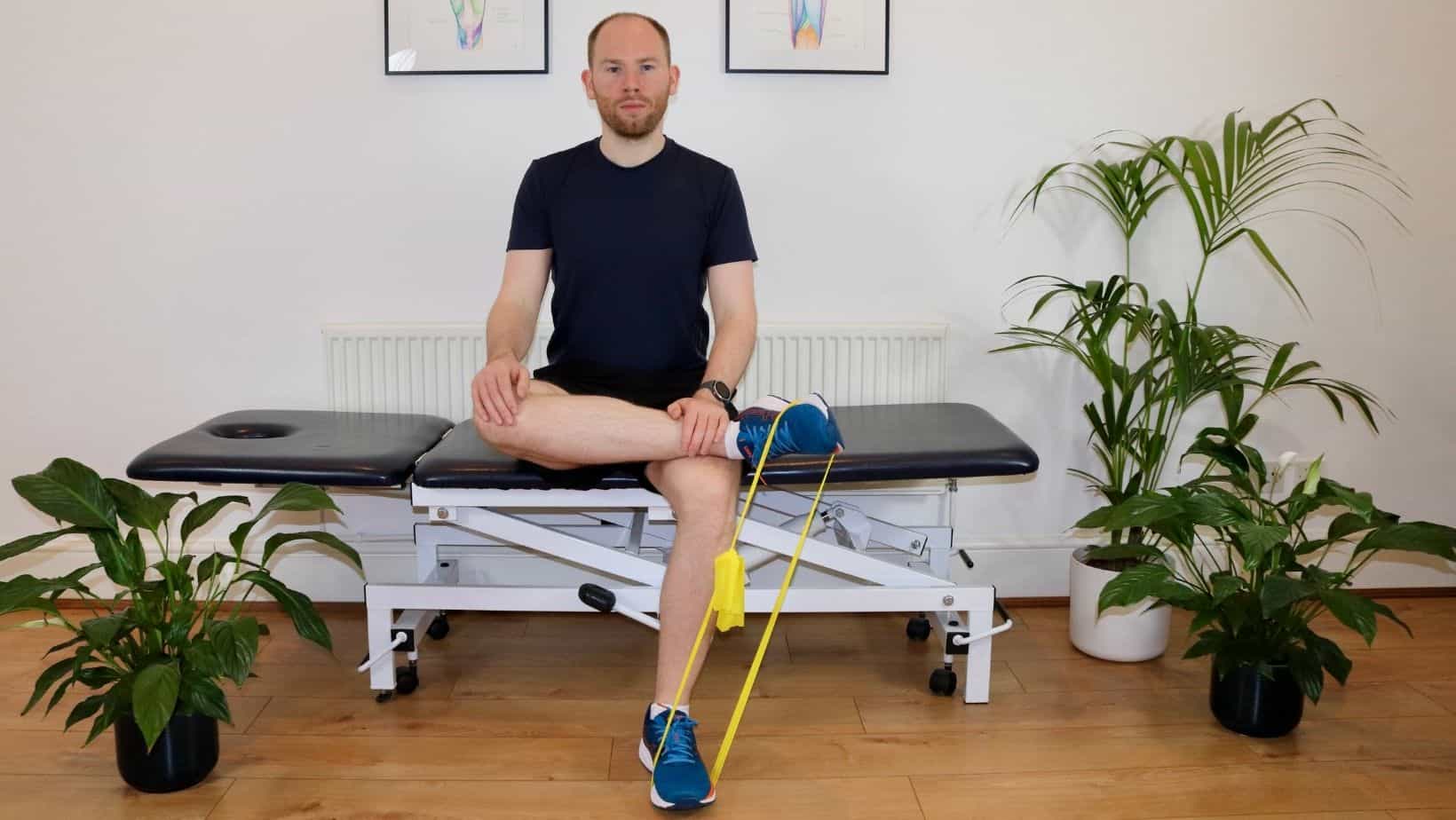
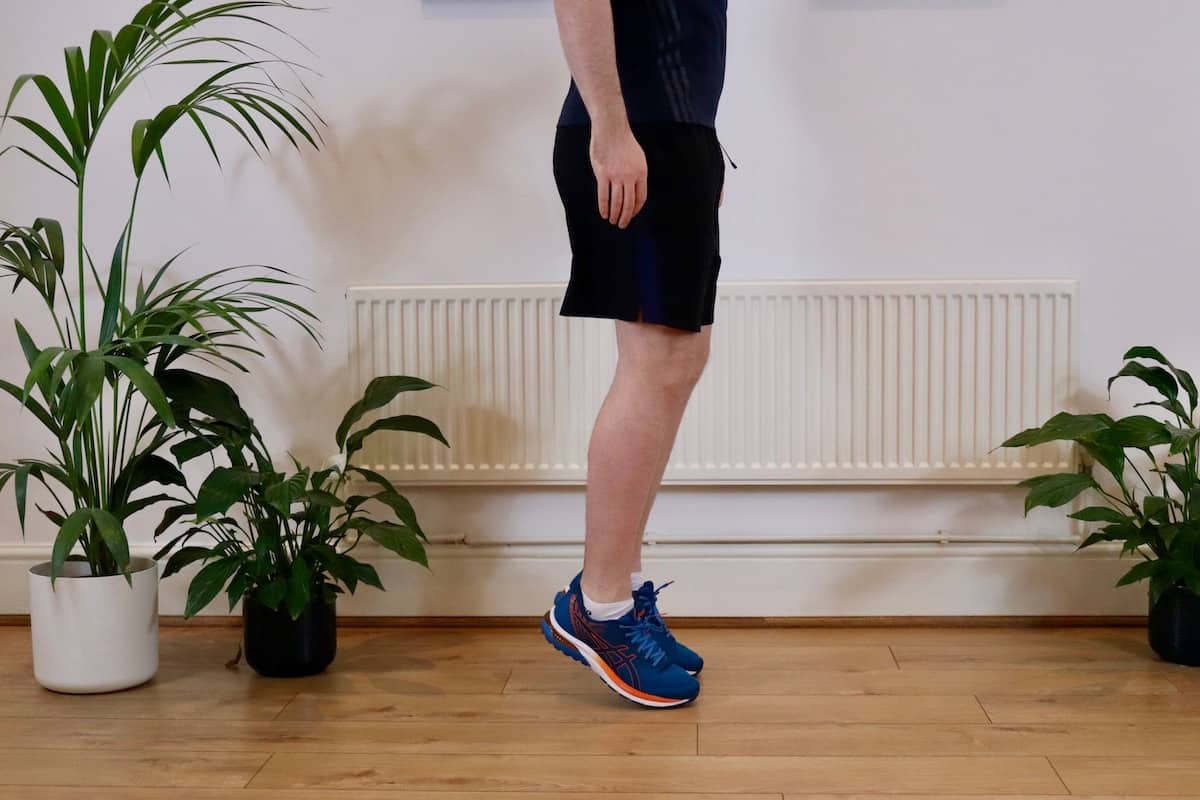
Double Leg Calf Raises
- Stand upright with your knees straight
- Maintain this knee position while lifting both heels off the floor
- Slowly return to your starting position to complete one repetition
- Repetitions: 25
- Sets: 3
- Frequency: Once daily
Balance Exercises
Proprioception is your body’s awareness of space and this is something that deteriorates after a 5th Metatarsal Fracture so it is important to work on specific balance exercises.
Single Leg Balance: Eyes Open
- Stand on one leg with your foot flat on the floor
- Hold your opposite leg out in front
- Focus on a point in front of you to help with stability
- Hold for 60 seconds
- Repeat 3-4 times daily.
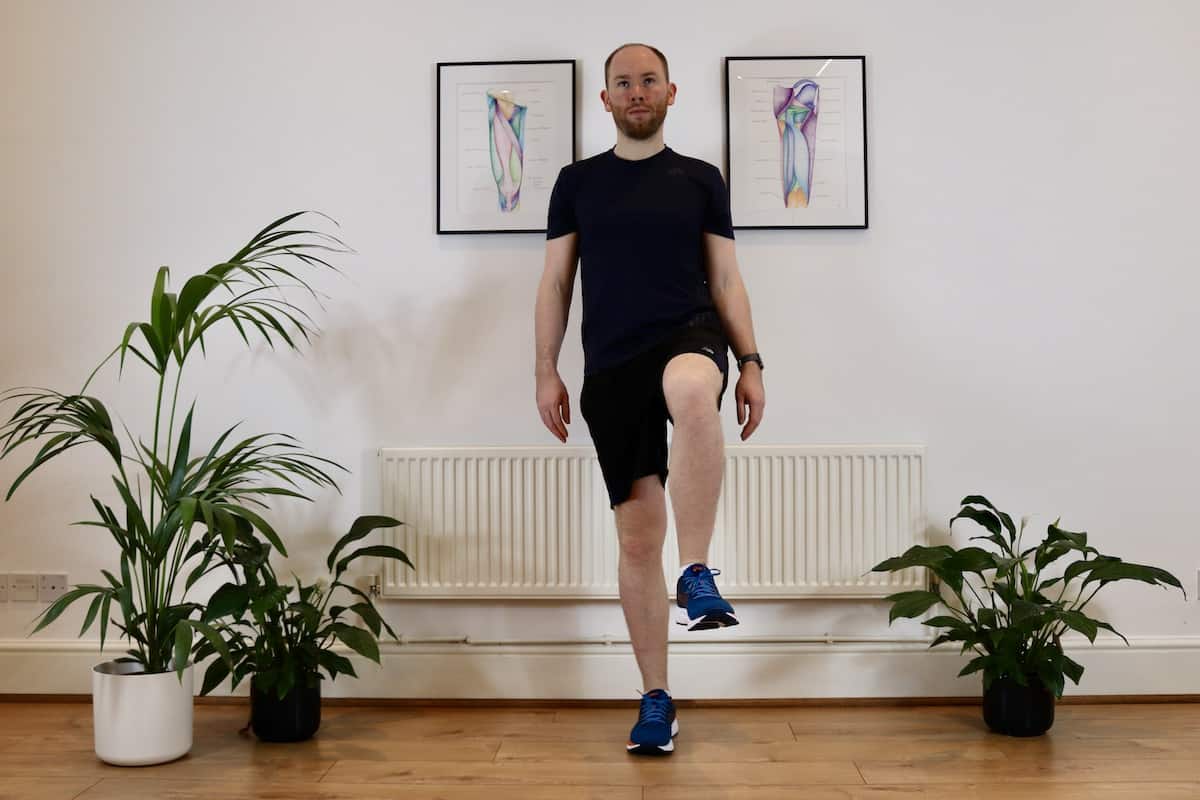

Single Leg Balance: Eyes Closed
- Stand on one leg with your foot flat on the floor
- Hold your opposite leg out in front
- Close your eyes while maintaining this position
- Hold for 60 seconds
- Repeat 3-4 times daily.
Physiotherapy with James McCormack
This article is written by James McCormack, a Lower Limb Specialist who is an expert in treating Metatarsal Fractures.
This is not medical advice. We recommend a consultation with a medical professional such as James McCormack if you are experiencing any of the symptoms discussed in this article. James offers Online Physiotherapy Appointments weekly and face-to-face appointments in his London clinic.








